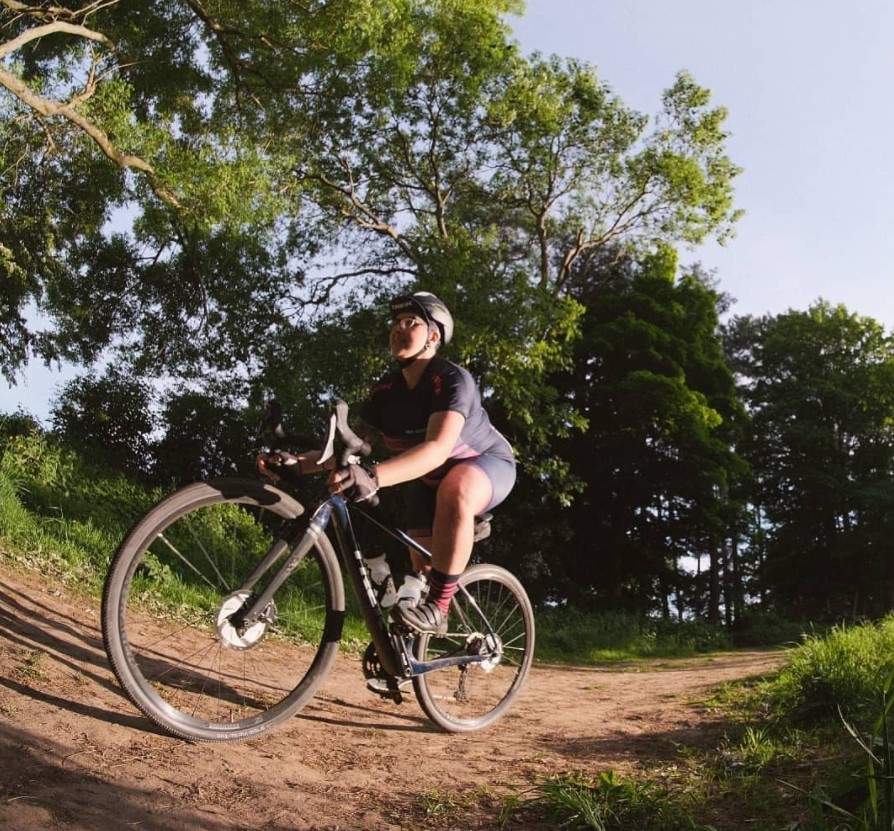Nutrition for indoor cycling: Fuel your workout and perform at your best
Advice from WorldTour & British Olympic cycling's nutritionist and dietician Nigel Mitchell, plus some bonus recipes
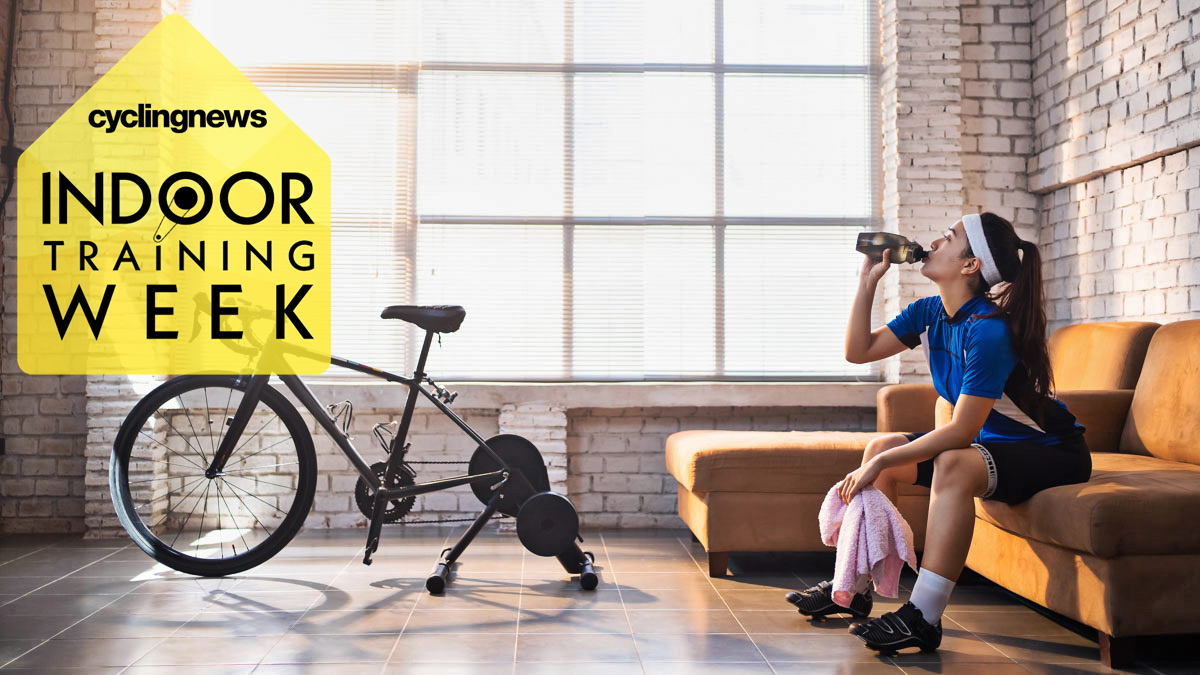
There’s no denying that with the temperature dropping and weather forecasts looking less and less inviting, more people are taking to their 'pain caves' in anticipation of the winter cycling season. With an increase in indoor cycling, there are other considerations to make, like how you’re going to fuel your body to perform at its best in what is, arguably, a very trying environment compared to the great outdoors.
While nutrition for indoor cycling might seem oddly specific, you’d be surprised how much we need to pay attention to our bodies when working out indoors, as well as how we should be approaching fuel and hydration. So whether you’re completely new to indoor cycling, or you’re a seasoned Zwifter who’s looking to up the ante this year, if you’re looking for expert advice on the best way to fuel your workouts, you’ve come to the right place.
We chatted with Nigel Mitchell, the renowned WorldTour cycling nutritionist behind numerous Grand Tour wins, as well as several historic Olympic gold medals. He’s been closely associated with British Cycling and its professional athletes for a long time, and is also the bestselling author of ‘The Plant-Based Cyclist’ and ‘Fuelling the Cycling Revolution’, and he’s about to launch his newest book, ‘The Cyclist’s Cookbook’.
Here’s what he had to say about nutrition for indoor cycling, and fuelling your workouts for the better.
Does indoor cycling come with its own nutritional requirements?
While this should be a simple question, it is of course the kind that doesn’t come with a simple answer, according to Nigel: “It all depends on what your objectives are”, he says. “Think about why you’re doing the training that you’re doing. A lot of the work that I do with athletes is around performance planning, and where diet and nutrition fits into that performance plan.”
The first consideration, Nigel says, is how long and frequent your training sessions will be, and how ‘serious’ or hard you’ll be working.
“Using myself as an example, the purpose of me doing indoor training is because either the weather’s too rubbish or I haven’t got time to get out on the bike. So with my sessions, I try to maximise the physicality, because they tend to be quite short, at less than an hour. In this case, what I will do to fuel or prepare, is an espresso or two before I get on the trainer. That keeps me caffeinated and full of energy. For sessions that last between 40 minutes to an hour, it’s not necessary to snack mid-way. If you need to eat beforehand, then I’d stick to a banana.
Get The Leadout Newsletter
The latest race content, interviews, features, reviews and expert buying guides, direct to your inbox!
“When I’m working with more serious athletes, who are training for up to two or three hours, then I’d expect them to regularly snack, starting from about 20-30 minutes into the session, and taking in fuel every 20-30 minutes after that, to keep their blood glucose levels stable, as these will deplete over time. I find that people will get a much better experience of their training that way.”
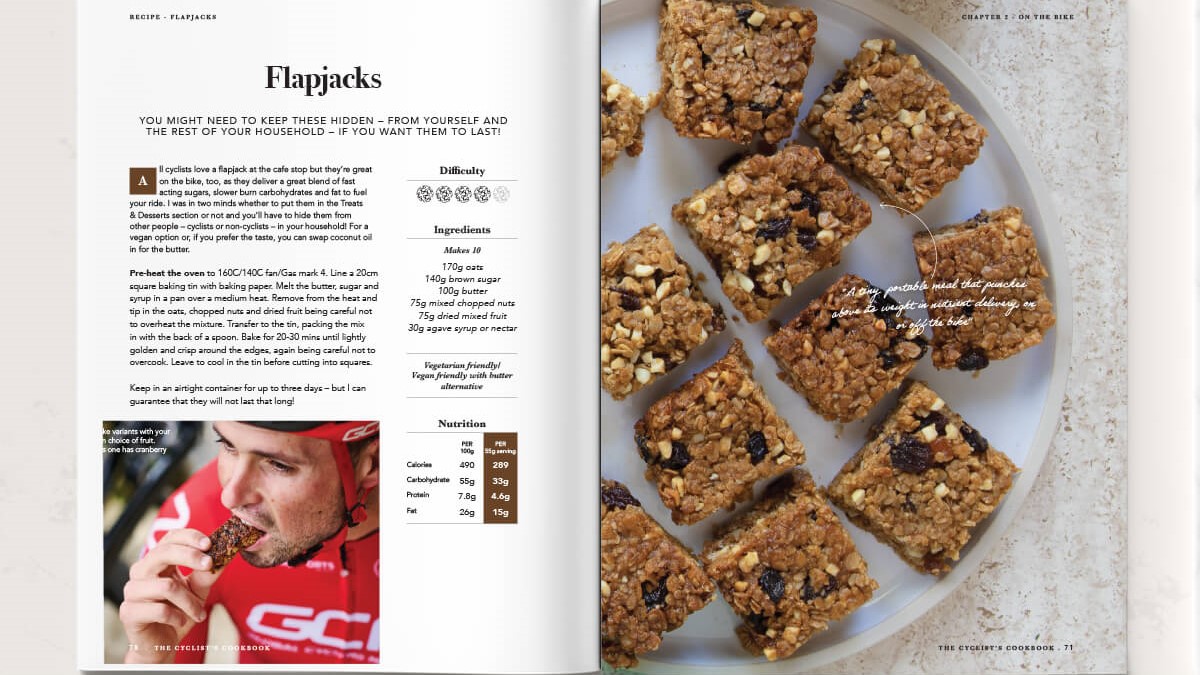
The best foods for fuel
“It may be a bit of a cliché, but one of the things that we tend to say as nutrition professionals, is there's no such thing as ‘bad food’, but a ‘bad diet’. Saying that, when we're working with people who are putting their bodies under a lot of stress, then maximising the nutrition from the food can really help the body to recover and perform. So choose foods that are really nutritionally dense. For example, pure sugar is obviously just pure carbohydrate, but you're not getting any of the other nutrients that the body requires, like B vitamins, potassium, sodium, and things like this.
“Opt for more complex whole foods, and actually combine them together so you get a real variety of different proteins, carbohydrates, and fibres. Fibre is very important when we’re looking at the health of the gut, or the microbiome. So I’d recommend things like mixed grains, which would include quinoa, spelt, pearl barley and rice, and mixing all those together. That’s one of my favourites, and a go-to, because it’s brilliant and so simple.
“On top of the proteins and complex carbohydrates, you also want to get some essential fats, with omega threes, which are important for helping to regulate some of the stress responses in the body. Avocado is a great source of fat, as well as flax seeds – just be sure to mill them first, otherwise, your body won’t digest them and they’ll go straight through you.
"For protein, I’m a big fan of dairy, but not everyone is. When we consider plant-based proteins, things like soy have a high PDCAAS (protein digestibility-corrected amino acid score), which basically means it’s a high-quality protein source that’s easy to digest.
“We’re understanding now that there are many more fantastic vegetable protein sources as well. Another great one is pistachio nuts, which are super-fats with lots of antioxidants and carotene for our eyes.
“Overall it’d be difficult to just say a specific food, as I believe in combining different foods together to get the nutrients that we need to keep the body active and help us perform and recover better.”
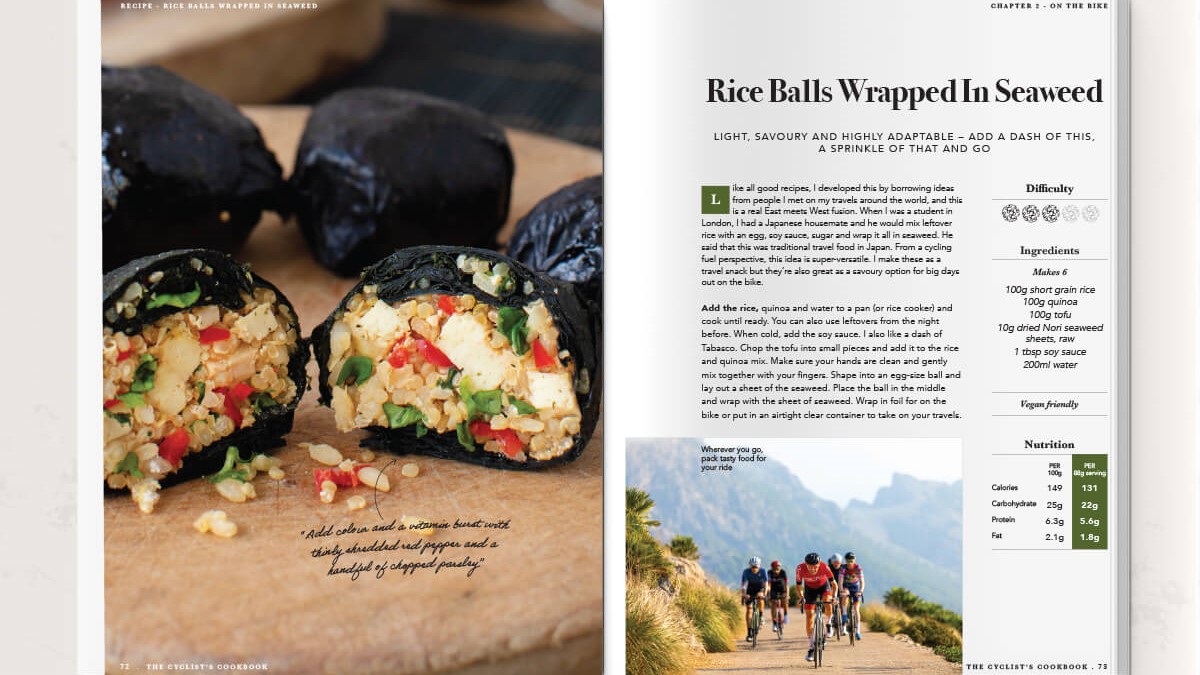
Which foods to avoid
“It’s the ultra-processed foods that aren’t great for you. When we published The Plant-Based Cyclist, we were shocked by how popular it was, and we’re seeing a lot more people adopting plant-based options, but many are going for ultra-processed plant-based foods. Things like burgers that are very convenient, but also contain stabilisers and caking agents. My mission has always been to try to get people to eat real foods, and think of how we can do that on a very simple and practical basis. Of course, I’m not saying you should never have them, but think about where they’ll fit into your overall diet."
So the advice is to eat real, whole foods, but what about if you’re short on time and unable to cook everything from scratch? Nigel, being a very busy person himself, has a lot of advice on how to make time for cooking healthy foods and making fuelling snacks and hydrating electrolyte drinks from scratch.
"I tend to do a lot of batch cooking, using some simple tools like a multicooker that acts as a pressure cooker, rice cooker and slow cooker in one. I’ll cook my porridge in it overnight with a timer so it’s ready when I get up in the morning. Then if you’re heading out to work all day or you’re doing a long training session, you can load up some ingredients and leave it to slow cook or pressure cook your next meal. I’ve given some real examples of these recipes in the new book, like the recovery beef stew. It can begin cooking when your virtual race starts, and be ready when you need it.
"A lot of the recipes in the book can be batch cooked and actually taste better when reheated a day or two afterwards, so there are ways to prioritise cooking healthy meals if you plan ahead."
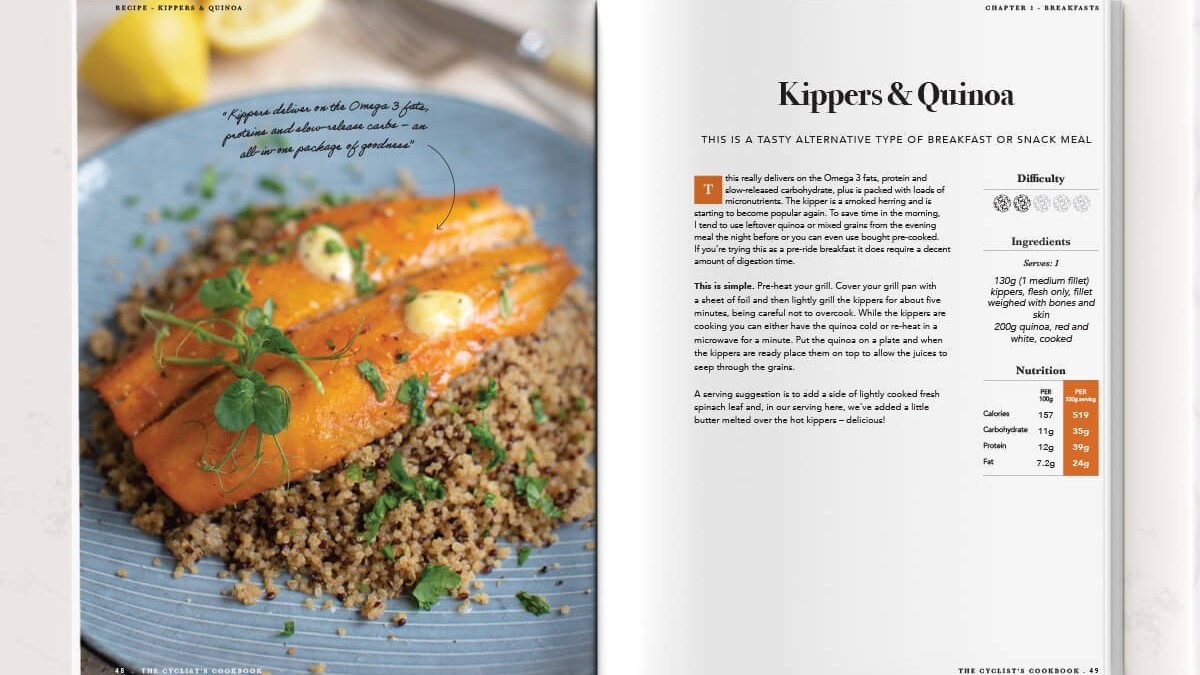
Energy gels and staying hydrated
For those of us who are putting our bodies through the wringer, whether that’s completing multiple two to three-hour sessions per week, or competing in a virtual race, sometimes reaching for an energy gel is the most convenient option. In many ways these of course can be a great help, as they give an instant boost to energy levels, but with Nigel’s emphasis on real foods, what are some good alternatives?
“A banana is going to work very effectively, and there’s a recipe in the book for rice cakes that are excellent [recipe for these below]. They’re particularly good because they’re made from cooked rice, which means not only are they full of carbohydrates, but they also provide fluid."
But what about making your own alternatives to energy gels and drinks at home?
"The biggest problem with making your own gels is the packaging, so you’d need to find a way to store them where they won’t go everywhere while you’re mid-race. But actually putting something together is quite easy to do. The book’s got recipes that are high in carbohydrates and easy to digest, but there are actually other recipes that would work, which are for drinks or shots, instead."
There’s no question that when you’re ramping up your indoor training, hydration is a key thing to get right. You’ll be losing a lot of fluid through sweat, since you won’t have the cooling air that comes with outdoor riding, so you need to make sure you replenish your body of those lost electrolytes. There are plenty of pre-made hydration drinks and tablets on the market, but it’s also possible to make your own at home, which not only saves you money, but helps you to avoid processed ingredients with names you can’t pronounce.
"When I’ve been working with athletes at camps at altitude, I quite like creating a hydration drink by squeezing a lemon into some cold water and adding a gram of salt. While there’s nothing wrong with commercial electrolyte drinks, I like to keep things simple and this works really well.
"I've developed a really high-calorie all-day drink which is more aimed at endurance athletes, but for indoor training, you could certainly make a shorter version of it for a shot of nutrients and energy. It uses ingredients like maltodextrin powder, and contains fructose and medium-chain triglycerides. You could easily mix it with 50-60ml of water and add a little salt, and keep it by the side of your bike for when you need it.
"One of my absolute favorite recipes that I recommend for high-intensity indoor cycling is my homemade ginger and turmeric shots [recipe provided below]. They pack quality nutrients into a small space, are really high in antioxidants, iron and vitamin C, and they will not only give you a jolt of energy, but they can also really help with recovery. You can easily get hold of fresh ginger, lemon and turmeric these days, and I sometimes add apple and cucumber for sweetness, and you can easily vary it. Then just add a pinch of black pepper to help with absorption."
Eating to recover
This brings us onto another area of cycling nutrition: recovery. Which foods or recipes would Nigel particularly recommend for post-workout recovery?
"When people think about recovery, they often think of energy levels and metabolism, which is very easy to replenish with carbohydrates. But on top of that, you also want to think about system recovery, and for that you’re going to need more proteins. So again, depending on people’s time and what they’ve got to do, they might opt for a recovery drink, which is something very easy to make yourself, or actually, you might want more of a food-based option, which can be really easy.
"If you’re doing a turbo session in the morning, before breakfast, then you can follow it up with my super porridge recipe, that’s got things like quinoa and flax in it, and that will be great, because it’s got all the carbohydrates and proteins and is more nutritionally diverse.
"For later in the day, you could prepare my recovery beef stew in the slow cooker, or for plant-based options, there’s the tofu risotto which is amazing because it’s made with multiple whole grains and not just rice, so it makes a great recovery meal.
"The most important thing is that after you’ve done something that’s been quite depleting or damaging, if you’re planning to do another workout in a day or two, and do them regularly, then you need to become very good at recovery and replenishing. It’s not as critical if you’re only training once a week, though."
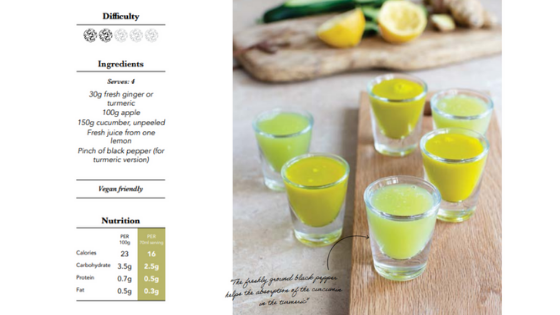
Ginger & Turmeric Juice Shots recipe
Serves: 4
Ingredients:
- 30g fresh ginger or turmeric
- 100g apple
- 150g cucumber, unpeeled
- Fresh juice from one lemon
- Pinch of black pepper (for turmeric version)
Method:
Put the ginger or turmeric (no need to peel) and the rest of the ingredients in a blender or liquidiser and blend until smooth. If it’s very thick, add half a cup of water. The puréed ingredients need to be filtered and I use a ‘jelly bag’ (fruit straining bag available from cook shops), although I have also used a clean tea towel and it worked fine. I let the mixture strain over a jug in the fridge overnight. When it appears to have finished, apply some pressure to extract more juice.
Give the juice a stir and drink – a portion should be about a shot measure.
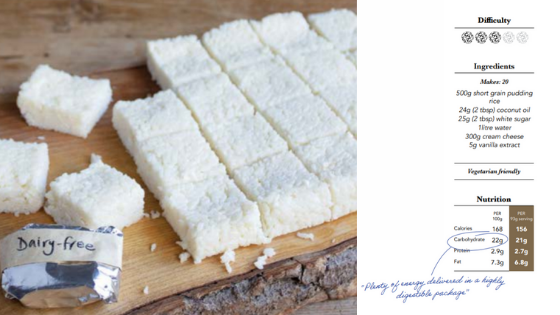
Oreo Rice Cakes recipe
If you like these, there are five other variations in The Cyclist’s Cookbook, including Salted Caramel Dairy Free Rice Cakes, Pistachio Rice Cakes, and Parma Ham & Parmesan Cheese Rice Cakes.
Makes: 20
Ingredients:
- 500g short grain pudding rice
- 24g (2 tbsp) coconut oil
- 25g (2 tbsp) white sugar
- 1litre water
- 300g cream cheese
- 55g (5 biscuits) crushed Oreo biscuits
Method:
Place the rice, water, vanilla, sugar, water and coconut oil into a rice cooker, fold in the crushed biscuits, and follow the manufacturer’s instructions.
Or, put them all in a large saucepan and follow the cooking instructions on the rice packet. The crucial thing is to have the correct ratio of one part rice to two parts water.
When cooked, mix in the cream cheese. Spoon into a zip-seal freezer bag (size large or medium depending on the brand), flatten and smooth the air out. Leave to cool on a flat tray and, once cool, refrigerate overnight.
Cut into approximately 20 squares and keep in an airtight container in the fridge. If refrigerated they will keep for about four days, or you can divide the ingredients in half to make half a batch.
Nigel Mitchell's new book, The Cyclist's Cookbook is available to pre-order now.
Mildred joined as Reviews Writer for Cyclingnews and BikePerfect in December 2020. She loves all forms of cycling from long-distance audax to daily errand-running by bike, and does almost everything on two wheels, including moving house, and started out her cycling career working in a bike shop. For the past five years she's volunteered at The Bristol Bike Project as a mechanic and session coordinator, and now sits on its board of directors.
Since then she's gone on to write for a multitude of cycling publications, including Bikeradar, Cycling Plus, Singletrack, Red Bull, Cycling UK and Total Women's Cycling. She's dedicated to providing more coverage of women's specific cycling tech, elevating under-represented voices in the sport, and making cycling more accessible overall.
Height: 156cm (5'2")
Weight: 75kg
Rides: Stayer Groadinger UG, Triban RC520 Women's Disc, Genesis Flyer, Marin Larkspur, Cotic BFe 26, Clandestine custom bike
